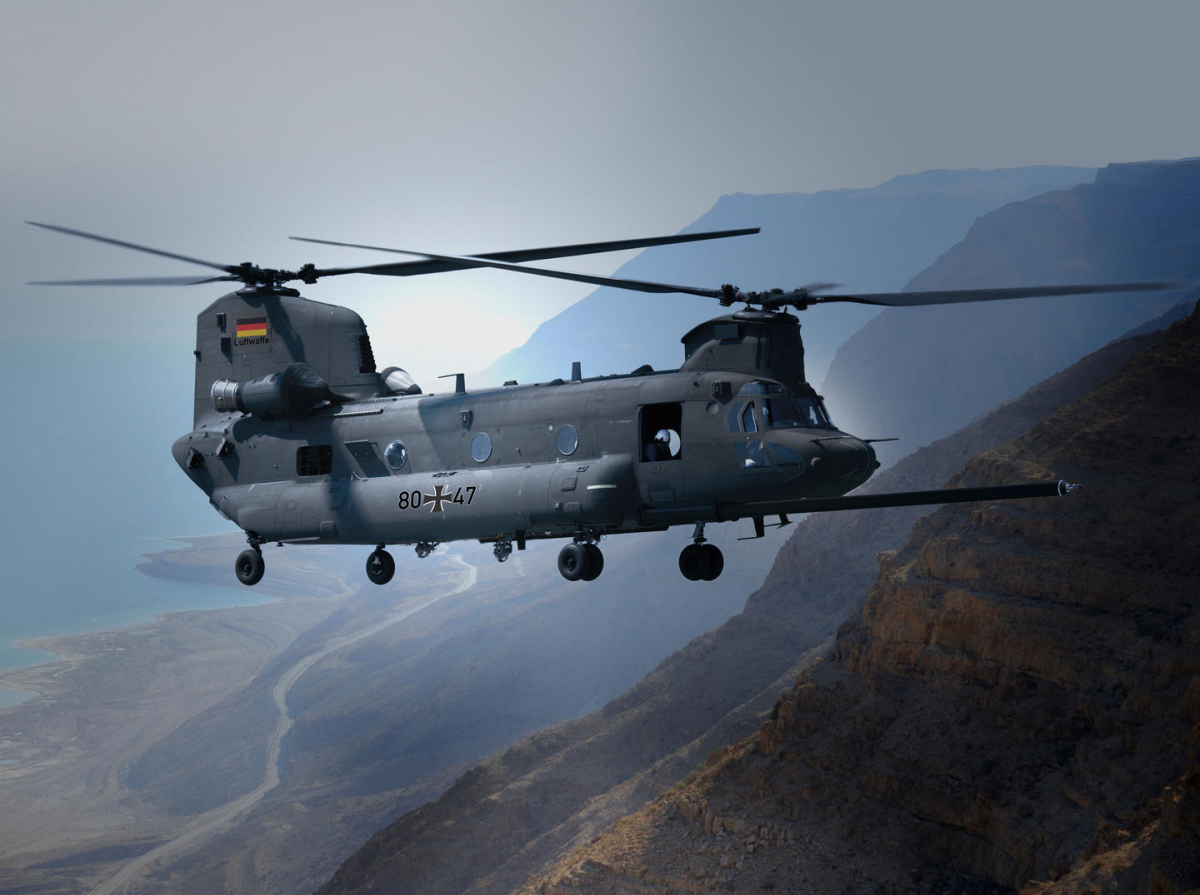On June 1, the Federal Ministry of Defense officially announced its choice in the Schwerer Transporthubschrauber (STH) program: the German CH-53s will be replaced by CH-47F Block IIs.
The STH program
A little over a month ago, various reports already hinted at a Boeing victory in the Schwerer Transporthubschrauber (STH) competition (article on the subject). As of yesterday, it is now official: the CH-47F will replace the 80 CH-53G/GA/GS (January 2022). In total, Germany is expected to order 60 CH-47F Block II heavy-lift helicopters with air-to-air refueling capability. According to Reuters, the total value of the contract is around €4 billion, with deliveries scheduled between 2023 and 2029. The decision still needs to be approved by the Bundestag (Federal Parliament).
The competition initially seemed to lean in favor of Lockheed's CH-53K, a heavily upgraded version of the German CH-53. However, the cost of the CH-53K would have been too high, since with the allocated budget, only 40 helicopters could have been ordered out of the 60 planned. On the other hand, the CH-47F would have had an advantage because of its interoperability within NATO. Indeed, in January 2022, eight Alliance member states were already using Chinooks:
- Canada, 14 CH-47F
- Greece, 25 CH-47D/SD
- Italy, 22 CH-47C/F
- Netherlands, 20 CH-47F
- Spain, 5 CH-47D/F (eventually, only 17 CH-47Fs)
- Turkey, 11 CH-47Fs
- UK, 57 CH-47 HC3/4/5/6/MH-47Gs (and 14 ordered to replace older versions)
- USA, 509 CH-47D/F/MH-47G (22 ordered)
The German CH-47F block II version will be different from the basic CH-47F block II version since Germany wanted a helicopter with air-to-air refueling capability. Apart from this exception, it is an improved version of the CH-47 block I:
- Kerosene tanks redesigned into a single tank, increasing fuel carryout
- reinforced cell and landing gear for increased carryout (including the Humvee's replacement, the JLTV)
- slightly increased maximum hot weight at 6.000 feet with a temperature of 35°C (block II: 21.7 tons, as opposed to block I: 21 tons)
- increase in maximum takeoff weight (block II: 24.5 tons as opposed to block I: 22.7 tons)
Finally, the overall transport capabilities remain the same as the CH-47F block I:
- 3 personnel (pilot, co-pilot and flight engineer) and capacity for 36 military personnel or 24 stretchers
- slinging: center hook (11.7 tons), front hook (7.7 tons), rear hook (7.7 tons) or tandem (11.3 tons).
German CH-47F Block II
The German CH-47F Block II will be based on the CH-47F Block II with one difference: the addition of an air-to-air refueling capability. Apart from this exception, the Block II standard involves:
- an increase in fuel carriage with the addition of a single tank (instead of three tanks on the Block I)
- a strengthened airframe and landing gear for increased carrying capacity (including the Humvee's replacement, the JLTV)
- a slight increase in maximum hot weight to 6.000 feet with a temperature of 35°C (Block II: 21.7 tons, as opposed to Block I: 21 tons)
- an increase in maximum takeoff weight (Block II: 24.5 tons as opposed to Block I: 22.7 tons)
- a new transmission (9% more torque)
New blades had been considered but ultimately abandoned due to vibration issues.
Finally, the general transport capabilities remain the same as the CH-47F Block I:
- 3 personnel (pilot, co-pilot and flight engineer) and an internal transport capacity of 36 military personnel or 24 stretchers
- slinging: center hook (11.7 tons), front hook (7.7 tons), rear hook (7.7 tons) or tandem (11.3 tons).
Boeing has partnered with several German and European companies for this contract, including a partnership with Airbus (signed March 25, 2022).
Découvrez cet article sur Air&Cosmos

